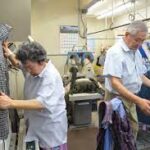In the underbelly of our areas exists a stressful fact that commonly continues to be covert behind closed doors – domestic violence. It is a pervasive concern that goes beyond geographical boundaries, social standards, and socioeconomic standing, leaving a path of destruction in its wake. Despite its prevalence, discussions bordering residential violence are often consulted with discomfort or evasion. Nevertheless, it is vital to face this uneasy truth head-on and look into its complexities to absolutely recognize its influence and job towards eliminating it. So, let us start a trip to unravel the layers of domestic physical violence and discover why nobody needs to ever excuse or endure it. spam website
Recognizing the Characteristics:
Residential physical violence encompasses a spectrum of violent habits, including physical, psychological, sexual, and monetary misuse, committed by one partner over an additional within an intimate connection. It is not just a result of short-lived temper or loss of control but rather an organized pattern of power and control wielded by the abuser to assert prominence and infuse fear in the target. This control is typically exerted via control, coercion, isolation, and dangers, producing a dynamic of dependency and subservience.
The Cycle of Abuse:
At the core of domestic violence exists the perilous cycle of misuse, defined by distinctive phases – tension-building, surge, and reconciliation. Throughout the tension-building stage, small conflicts and stress escalate, developing an environment of anxiousness and concern. This tension eventually culminates in an explosive case of physical violence or hostility, leaving the victim literally and mentally damaged. Complying with the eruption, the abuser may present sorrow, say sorry, or deal guarantees of adjustment throughout the settlement stage, enticing the sufferer back right into the relationship. Nonetheless, this remorse is usually short-lived, and the cycle repeats itself, trapping the sufferer in a perpetual cycle of abuse.
The Far-ranging Impact:
The influence of residential physical violence prolongs far beyond the prompt physical injuries, leaving deep emotional and psychological marks that might never ever totally recover. Sufferers commonly suffer from reduced self-esteem, depression, anxiety, and trauma (PTSD), coming to grips with sensations of shame, shame, and self-blame. In addition, the trauma of residential violence can have profound effects on children who witness or experience it, leading to behavioral troubles, scholastic troubles, and long-term emotional concerns. Additionally, the financial consequences of domestic violence, including loss of employment, housing instability, and financial dependancy, worsen the difficulties encountered by survivors, making it even more difficult to damage free from the cycle of misuse.
Breaking the Silence:
Damaging the silence bordering domestic violence is imperative to impacting purposeful change and supporting survivors on their trip to recovery and empowerment. It requires a diverse technique that attends to the source of physical violence, challenges societal standards and mindsets, and provides detailed assistance solutions for survivors. Education and learning and awareness projects play a vital role in resolving myths and misunderstandings about domestic physical violence, urging victims to seek assistance and empowering onlookers to intervene securely. Additionally, legal and plan reforms are needed to enhance defenses for survivors, hold wrongdoers answerable, and enhance access to justice.
Frequently asked questions:
What is domestic violence?
Residential physical violence refers to a pattern of violent habits made use of by one companion to acquire or preserve control over an additional within an intimate relationship. It can consist of physical, emotional, sexual, and financial misuse.
Who can be affected by residential physical violence?
Residential physical violence can affect people of any type of sex, age, sexual orientation, race, ethnicity, or socioeconomic status. It happens across all kinds of connections, consisting of heterosexual, LGBTQ+, married, cohabitating, dating, and domestic relationships.
What are the indications of domestic violence?
Signs of residential violence may consist of physical injuries, constant lacks from work or social tasks, low self-confidence, stress and anxiety, depression, isolation from family and friends, and regulating actions from a partner.
Why do individuals remain in abusive relationships?
There are lots of reasons why a person might stay in an abusive relationship, consisting of anxiety for their safety and security, economic dependence, cultural or religious beliefs, sensations of regret or embarassment, really hope that the abuser will certainly transform, and absence of assistance or sources to leave.
Exactly how can I assist someone experiencing residential physical violence?
If you presume that a person you know is experiencing residential violence, it’s vital to supply non-judgmental assistance and pay attention to their experiences without pushing them to leave the connection. Urge them to seek aid from neighborhood sources, such as residential physical violence hotlines, shelters, or therapy services.
What should I do if I am experiencing residential violence?
If you are experiencing domestic physical violence, your safety and security is the top concern. Think about connecting to trusted pals, family members, or assistance companies for support. Create a security plan and take into consideration getting in touch with local police or seeking a safety order if necessary. https://bajilive.biz/
Exist resources available for survivors of domestic physical violence?
Yes, there are numerous sources available for survivors of residential violence, consisting of sanctuaries, hotlines, counseling solutions, lawful campaigning for programs, and support groups. Lots of neighborhoods also have actually companies committed to offering assistance and resources to survivors and their families.
Conclusion:
Domestic physical violence is a severe violation of civils rights that has no location in any culture. It thrives in silence and secrecy, perpetuating cycles of anxiety, pity, and suffering. However, by beaming a light on this pervasive concern, we can break the chains of silence and produce a future where every individual is devoid of the hazard of physical violence and coercion. So, the next time you are asked, “Do you like residential physical violence?” let your solution be a definite rejection of this abhorrent criminal offense and a commitment to building a globe where love is synonymous with respect, equal rights, and concern.







